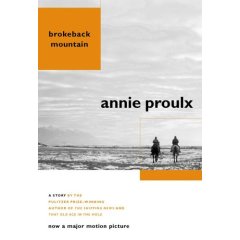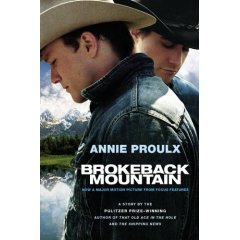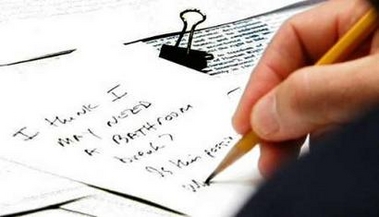“So when Bob Henry, captain of the Rachel Marie, who is in charge of towing Smithson’s island, looked out across the East River Thursday afternoon and saw another piece of conceptual art gaining on him, he did not view the development kindly.”
A Miniature Gate in Hot Pursuit of a Miniature Central Park [nyt]
Water, Gate
“So when Bob Henry, captain of the Rachel Marie, who is in charge of towing Smithson’s island, looked out across the East River Thursday afternoon and saw another piece of conceptual art gaining on him, he did not view the development kindly.”
A Miniature Gate in Hot Pursuit of a Miniature Central Park [nyt]
All Things Considered, I’d Rather Be In Passaic
I guess there’s some…irony? justice? synchronicity? between Robert Smithson’s non-site works–pieces of far-off locations displaced into a gallery–and twiddling your thumbs at a boring* Smithson symposium in a college auditorium while the last 36 hours of the artist’s Floating Island tick by in gorgeous, sunny, autumnal splendor.
Net net: forget the next three sessions of the symposium (maybe they’ll be podcast), and get your butt to the river to watch the barges go by.
[*although one potential bombshell was dropped, it went seemingly unnoticed. In answer to the moderator’s question about ever rebuilding the Spiral Jetty by allowing new rocks to be piled onto it, the artist’s widow and executor Nancy Holt didn’t reject the idea.
There’s precedent, she said, because Smithson sometimes instructed Holt or other friends go get rocks for his pieces. He didn’t privilege the hand of the artist, she said. True, perhaps, but only partly relevant; more to the point is Smithson’s own intentions for the effects of entropy on the Jetty, not whether he had to be present to dump the rocks. The other factor is how to deal with increasing touristification of the site, which now gets tour buses and up to 100 visitors/day.]
All Things Considered, I’d Rather Be In Passaic
I guess there’s some…irony? justice? synchronicity? between Robert Smithson’s non-site works–pieces of far-off locations displaced into a gallery–and twiddling your thumbs at a boring* Smithson symposium in a college auditorium while the last 36 hours of the artist’s Floating Island tick by in gorgeous, sunny, autumnal splendor.
Net net: forget the next three sessions of the symposium (maybe they’ll be podcast), and get your butt to the river to watch the barges go by.
[*although one potential bombshell was dropped, it went seemingly unnoticed. In answer to the moderator’s question about ever rebuilding the Spiral Jetty by allowing new rocks to be piled onto it, the artist’s widow and executor Nancy Holt didn’t reject the idea.
There’s precedent, she said, because Smithson sometimes instructed Holt or other friends go get rocks for his pieces. He didn’t privilege the hand of the artist, she said. True, perhaps, but only partly relevant; more to the point is Smithson’s own intentions for the effects of entropy on the Jetty, not whether he had to be present to dump the rocks. The other factor is how to deal with increasing touristification of the site, which now gets tour buses and up to 100 visitors/day.]
Re-Visiting MoMA’s Re-installed Contemporary Galleries
greg.moma reporting: The Modern has reinstalled the contemporary galleries on the second floor, and it’s an invigorating pleasure and a huge improvement. Seeing it again yesterday with my mother, I found myself paying less attention to the show’s conceptual and art historical underpinnings [Kelley’s and Ray’s juxtaposition with the Viennese Actionist photos of a doused bride, for example] and more to its sensory pleasures [or, in the case of Nauman’s cacophanous drum/rat maze piece, its assaults].
You don’t need to write for October to appreciate the nods to respective senses: the visual saturation of Yinka Shonibare’s batik costumes in front of Dana Schutz’s giant painting; the aural power of Janet Cardiff’s 40-Part Motet*; the threatening touch of a dense carpet of pins (which echoes nicely the greyscaled image on Felix Gonzalez-Torres’ billboard); or the leaching of sensory inputs as you move through a gallery of black/white works (including Yayoi Kusama’s photocollage of dot paintings, a Richter-scale masterpiece, if you ask me) into James Turrell’s inky darkness [where you’re immersed in red light, of course.]
While it’s nice to see MoMA has important works like Marina Abramovic’s early video and Charles Ray’s prop pieces, it’s even better to see them exhibited in coherent, engaging way that signals the museum isn’t tone deaf when it comes to contemporary art.
* Cardiff’s choral piece was last shown in NYC at PS1 in October 2001. It was an overwhelming, mournful piece then when the city was still in shock; yesterday, I found myself choking up repeatedly and involuntarily as I walked around it. Cardiff didn’t set out to create a memorial to September 11th, but for some of us, her work seems destined to remain inextricably linked to the immediate aftermath of September 11th. [here’s what I wrote about that first installation.]
Smithson Symposium Saturday 9/24
New York Is Smithson Country this week, what with the Floating Island and the Whitney retrospective and the Smithson Symposium all day Saturday. What symposium, you say? Actually, that’s what I said. I had no idea.
Anyway, over four sessions, artists, curators and historians will discuss the Spiral Jetty, Smithson’s writings, films, travels, and influence [HUGE, in case you can’t make it]. Me, I’m going to hear Nancy Holt and folks talk about the construction and evolution of the Jetty; and Chrissie Iles and Joan Jonas talk about road trips and film.
Schedule and reservation info is in the sidebar at Whitney.org [whitney.org]
Smithson on greg.org [or greg.org on Smithson, actually]
Bonus Smithson: Tyler Green reports from the launch of Floating Island for the LAT
Speaking At A.I.R. in Chelsea Tuesday 9/20 at 630pm
I’ve been invited to speak Tuesday evening (tonight) at A.I.R. on the subject of women’s art and the marketplace. A.I.R. is the oldest artist-run gallery for female artists in the city, and it was established for the purpose of fostering an audience and environment for showing and making art without the overriding commercial motivations that usually accompany gallery-based work.
It’s an interesting venue to discuss these subjects, which I wrote about last spring in the NYT, especially in light of the current, superheated art world/market where quality is often equated with marketability and desirability. Jerry Saltz just wrote (again) about the need for an antidote, when most people don’t even acknowledge that there’s a disease right now, at least in public. I may end up just reading Jerry’s piece and opening it for questions [kidding].
If you’re around 511 W 25th st, suite 301 this evening at 6:30-8:00, stop by, listen, and throw in your two bits.
Night A.I.R. Series, organized by A.I.R. Fellow Sarah Blackwelder [airnyc.org]
The Revolution Will Be Catered Very Well
This is apparently going down tonight, 9/18. I hope someone called craft services. Remember, you heard it here third:
The Los Angeles Lunar Society advocates the secession of Venice from the city of Los Angeles, and does not preclude the use of revolution to achieve this end. However, many Lunar Society members are involved in work of one kind or another for the Hollywood dream factory and we were therefore forced during August’s full moon meeting to recognize that a Venice revolution might interrupt some production schedules.
–An Army Of None [theresalduncan.typepad.com]
So Long, Farewell
UCLA Medical Center is the epicenter of the Los Angeles basin or something. Robert Wise died there this week at 91.
In between editing Citizen Kane and flacking for Scorsese’s Gangs of New York [Scorsese was a big fan, so I’m sure it’s fine], Wise also directed The Sound of Music, West Side Story, The Day The Earth Stood Still, Star Trek: The Motion Picture…
Not a super-auteur-y guy, but in a good way. The Hindenburg,he directed The Hindenburg….
NYT Obit / imdb / previous greg.org fawning
So Long, Farewell
UCLA Medical Center is the epicenter of the Los Angeles basin or something. Robert Wise died there this week at 91.
In between editing Citizen Kane and flacking for Scorsese’s Gangs of New York [Scorsese was a big fan, so I’m sure it’s fine], Wise also directed The Sound of Music, West Side Story, The Day The Earth Stood Still, Star Trek: The Motion Picture…
Not a super-auteur-y guy, but in a good way. The Hindenburg,he directed The Hindenburg….
NYT Obit / imdb / previous greg.org fawning
Ooh, What A Little Klieglight Can Do


[images: reuters/larry downing via yahoo; whitehouse.gov]
Scott Sforza: I’m gonna put these giant spotlights here in New Orleans, just like I did with the Statue of Liberty on 9/11/02, and if you think the next three years won’t be a half-trillion dollar sinkhole of devastatingly corrupt cronyism, too, it’s your own fault.
[update via TPM: In other lighting news, Brian Williams reports the lights came on for the first time last night in the Warehouse District –from about 30 minutes before the Bush motorcade passed by until about an hour after it left.]
[update, Wonkette has Elizabeth Bumiller’s tour of the set for the pool report:
“Bobby DeServi and Scott Sforza were on hand as we drove up about 8 p.m. or so EDT handling last-minute details of the stagecraft,” Bumiller wrote. DeServi is the White House’s chief lighting designer; Sforza is in charge of visuals.
“Bush will be lit with warm tungsten lighting, but the statue [of Andrew Jackson] and cathedral will be illuminated with much brighter, brighter lights . . . like the candlepower that DeServi and Sforza used on Sept. 11, 2002, to light up the Statue of Liberty for Bush’s speech in New York Harbor,” she wrote.
“Here’s a quote from DeServi on the lit-up cathedral: ‘Oh, it’s heated up. It’s going to print loud.’ “]
So You Want To Read “Brokeback Mountain”
I shouldn’t be surprised that I’m getting this question a lot these days. Here’s what Ang Lee told the NYT’s Karen Durbin:
“When I first read the story, it gripped me. It’s a great American love story, told in a way that felt as if it had never been done before. I had tears in my eyes at the end. You remember? You see the shirts put away in the closet side by side.”
Who could forget? When Annie Proulx’s short story about two cowboys in love appeared in The New Yorker nearly eight years ago, it was so startling and powerful that for many people, the experience of reading it remains a vivid, almost physical memory.
The movie just won the Golden Lion at the Venice Film Festival, and had its North American debut at the Toronto Festival last week. The theatrical release is expected in December, which gives you enough time to track down a copy of Brokeback Mountain yourself.


Here’s where it is:
Here’s where it isn’t:
A slightly bowdlerized version of the text was posted last summer on a message board at heathbaby.com, but has since been taken down. If you try Googling a distinctive phrase [like, say, “They shook hands in the choky little trailer office,”] you might find it, though. [unbelievable-but-true update via towleroad: Amazon published the complete story as an excerpt for an out-of-print audio version of Close Range.]
And just like that, his dream of amassing a mountain of quarters from Amazon commissions burns off like morning dew on the alfalfa field.
Ang Lee: Master of Social Mores [nyt via iht]
Official filmsite: Brokebackmountain.com
Tote That Barge
 Randy Kennedy has an article on the making of Robert Smithson’s Floating Island, a tree-filled barge which will chug around lower Manhattan for a week or so:
Randy Kennedy has an article on the making of Robert Smithson’s Floating Island, a tree-filled barge which will chug around lower Manhattan for a week or so:
Smithson’s project is just as intimately connected to Central Park, which he regarded, in all its artificial pastorality, as a conceptual artwork of its own. (He revered Frederick Law Olmsted and said that he found him more interesting than Duchamp.) While not nearly as monumental as Smithson’s most famous work, “Spiral Jetty,” a 1,500-foot-long curlicue of basalt jutting into the Great Salt Lake in Utah, the island – which resembles a rectangular chunk of Central Park, neatly cookie-cuttered out – is a further twist on Smithson’s career-long fascination with displacement. This generally meant taking art outdoors and bringing pieces of the land back indoors, into galleries. In the case of “Floating Island,” the displacement is all outdoors, an exploration of land and water, urban and rural, real and recreated, center and periphery. As a paean to Central Park, it can be seen as a kind of artificial model of an artificial model of nature.
It’s Not Easy Making Art That Floats [nyt]
Even cooler, though, at nytimes.com/robertsmithson, Times makes a raft of its Smithson coverage, dating back to 1982, available (for who knows how long). [greg.org coverage of Smithson, alas, only goes back a couple of years.]
From The Anals Of Stupid Trademark Lawyering
Garrison Keillor is going after Rex for his “A Prairie Ho Companion” t-shirts. As if Keillor wasn’t unfunny and annoying enough already.
A Prairie Homeboy Companion [mnspeak, via fimoculous: “oh yeah, I got cease and desisted.”]
Let Free Some Rain!

George Bush asks Condi Rice for permission to pee, plus zoomed back version and on flickr [reuters/yahoo via waxy]
